If you’ve decided to travel to Thailand—the ancient Kingdom of Siam—you’ve probably come across images of some of its 4,000+ wats, or temples. And surely, among those photos, one must have caught your eye… yes, that one—the dazzling white temple of Wat Rong Khun in Chiang Rai. Impressive, right?
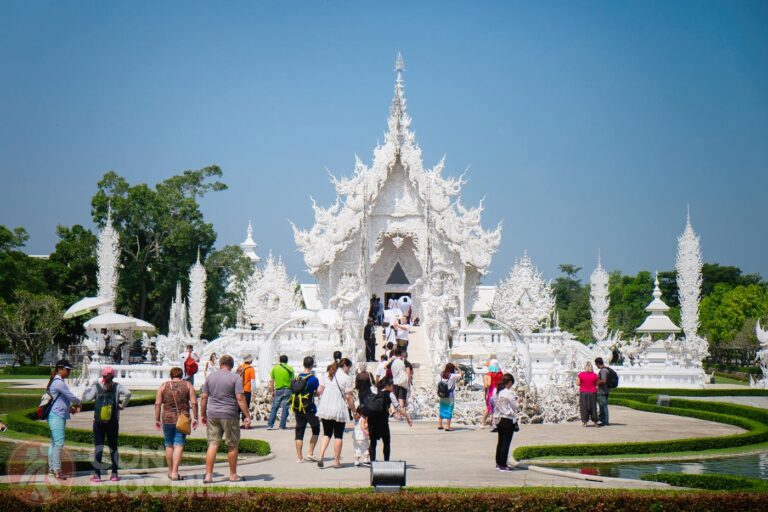
The temple is located about 12 kilometers from the city of Chiang Rai. You can get there by bus, tuk-tuk, car, motorbike, and of course bicycle… a wealth of options at a variety of prices. You can also do so as part of a tour to see the White Temple and other Chiang Rai attractions. Here are a few:
In a country where over 90% of the population practices Buddhism, spiritual care is essential—so there’s always room for another temple. And if it draws tourists as well, even better.
This was the idea behind Thai artist Chalermchai Kositpipat’s project when he began reconstructing Wat Rong Khun, the White Temple in Chiang Rai, in 1996.
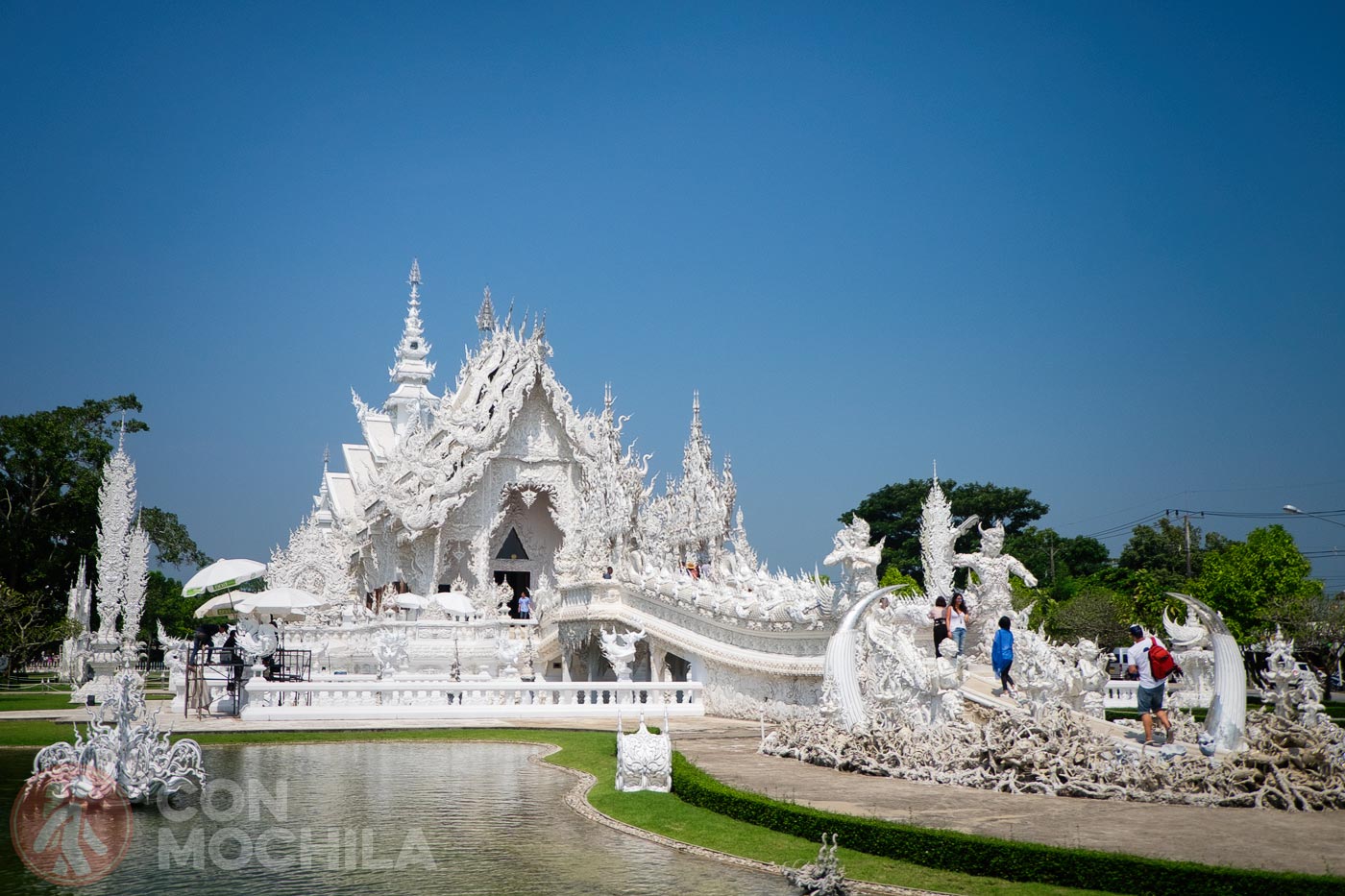
The temple itself is much older, but it has undergone several renovations—none as striking as this one, led by the Chiang Rai-born artist who dedicated the temple to the purity and wisdom of the Buddha.
Hence its two defining features: the color white, symbolizing purity, and crystal, representing Buddhist wisdom.
However, construction is still ongoing. The completed complex will eventually include several adjacent buildings, but like the Sagrada Familia in Barcelona, it’s shaping up to be a long-term endeavor.
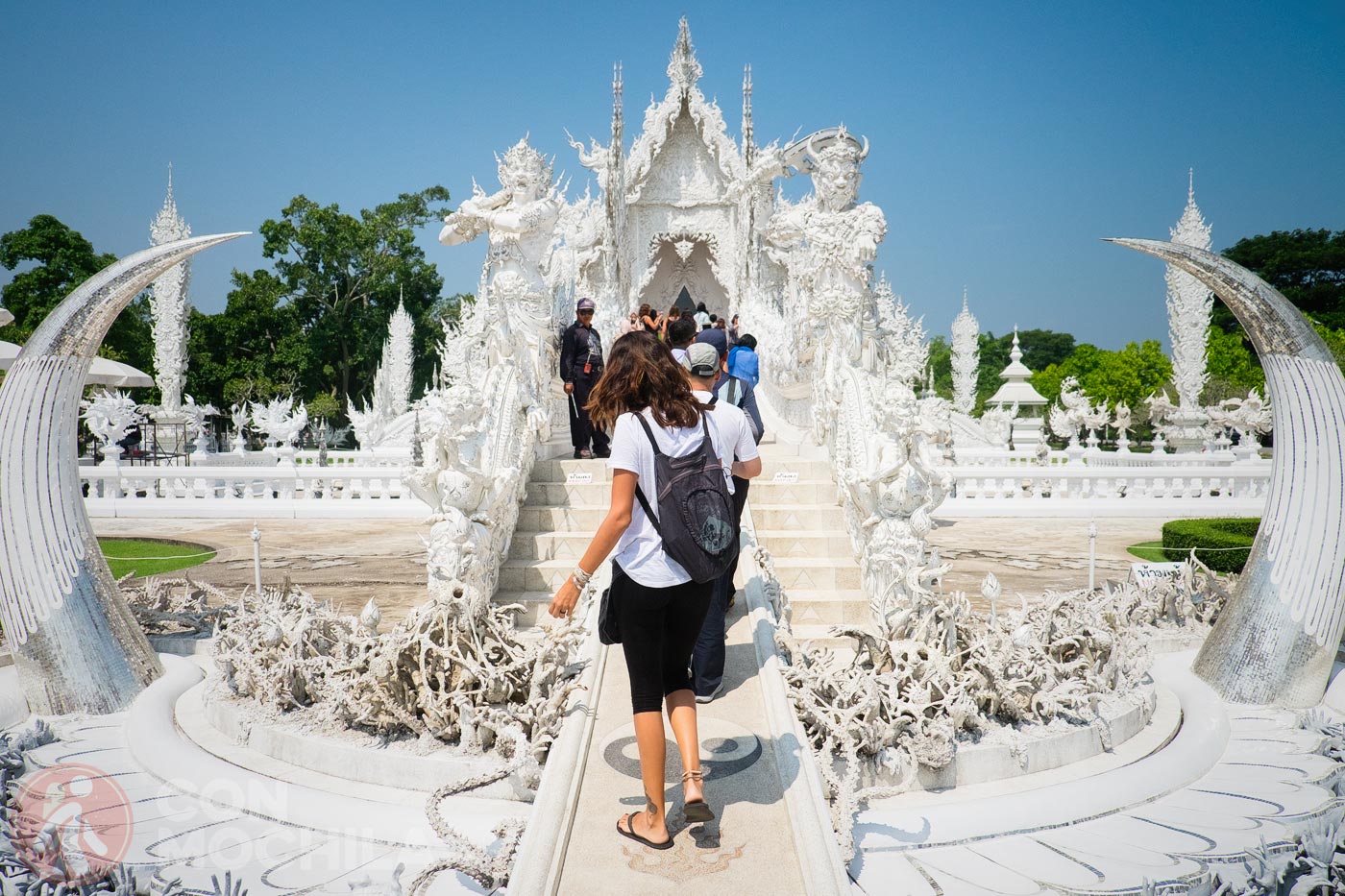
Standing in front of the temple, the first thing you’ll notice is the bridge, a symbolic fast-track through purgatory. It’s surrounded by sculpted hands reaching up from hell, representing temptation, greed, vanity, and other sins.
The bridge symbolizes the journey from death to reincarnation, according to Buddhist philosophy.
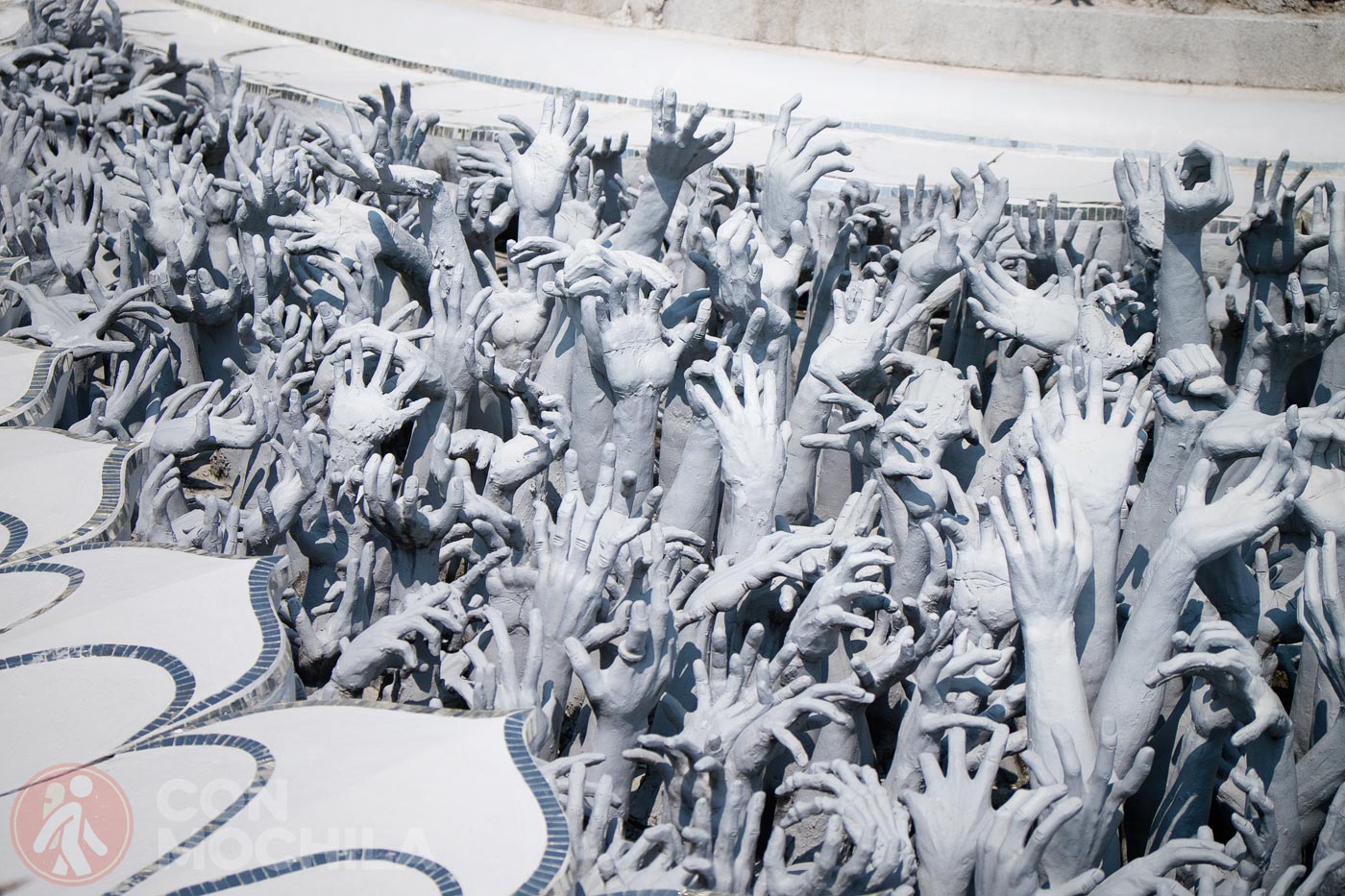
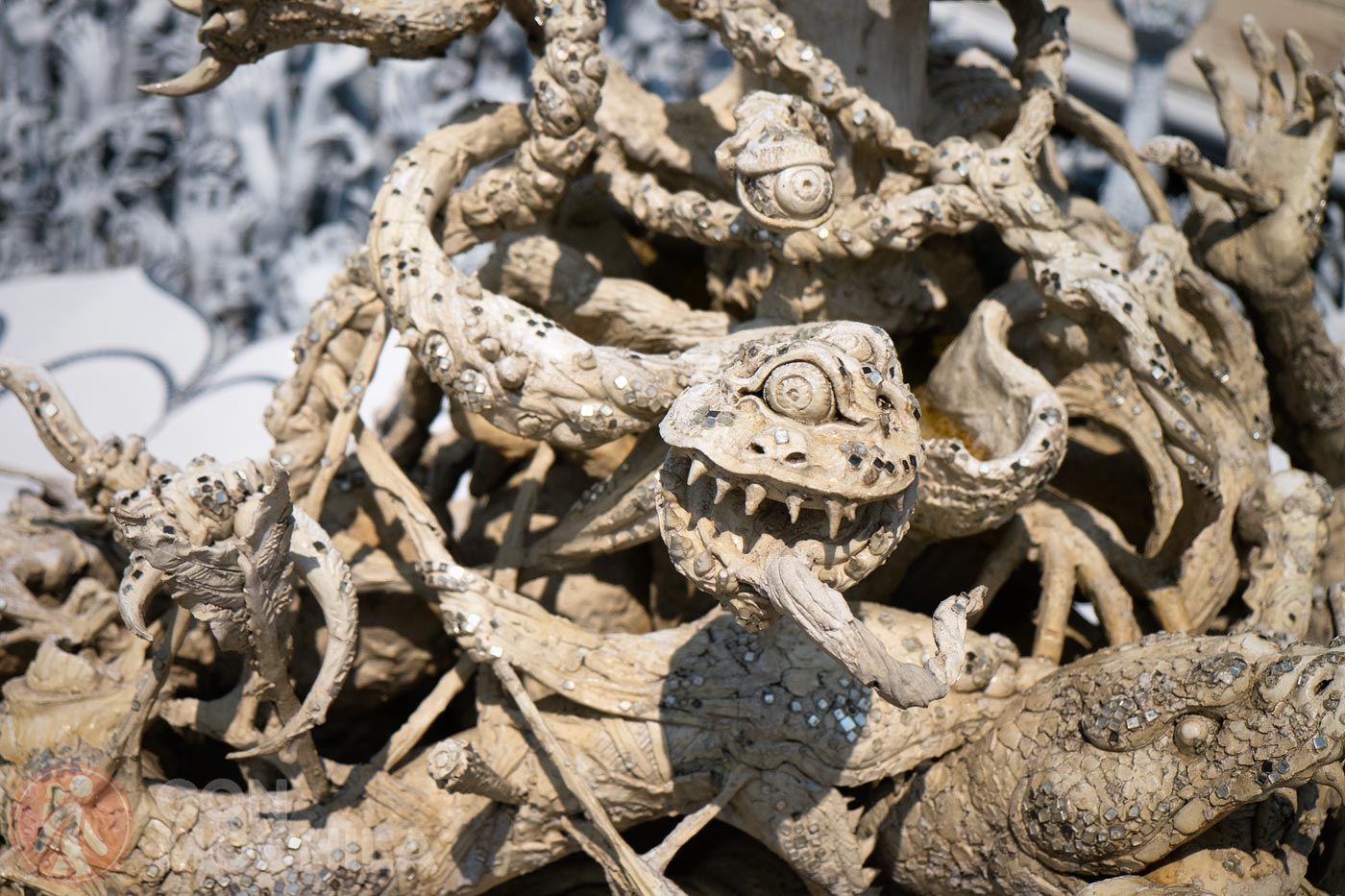
Along the way, you’ll spot two kinnaree, mythical beings from Buddhist lore that are half-human, half-bird. At the bridge’s end, two large Rahu figures guard the gates of heaven. They decide whether you’re worthy of entering the ubosot, the main hall of the temple.
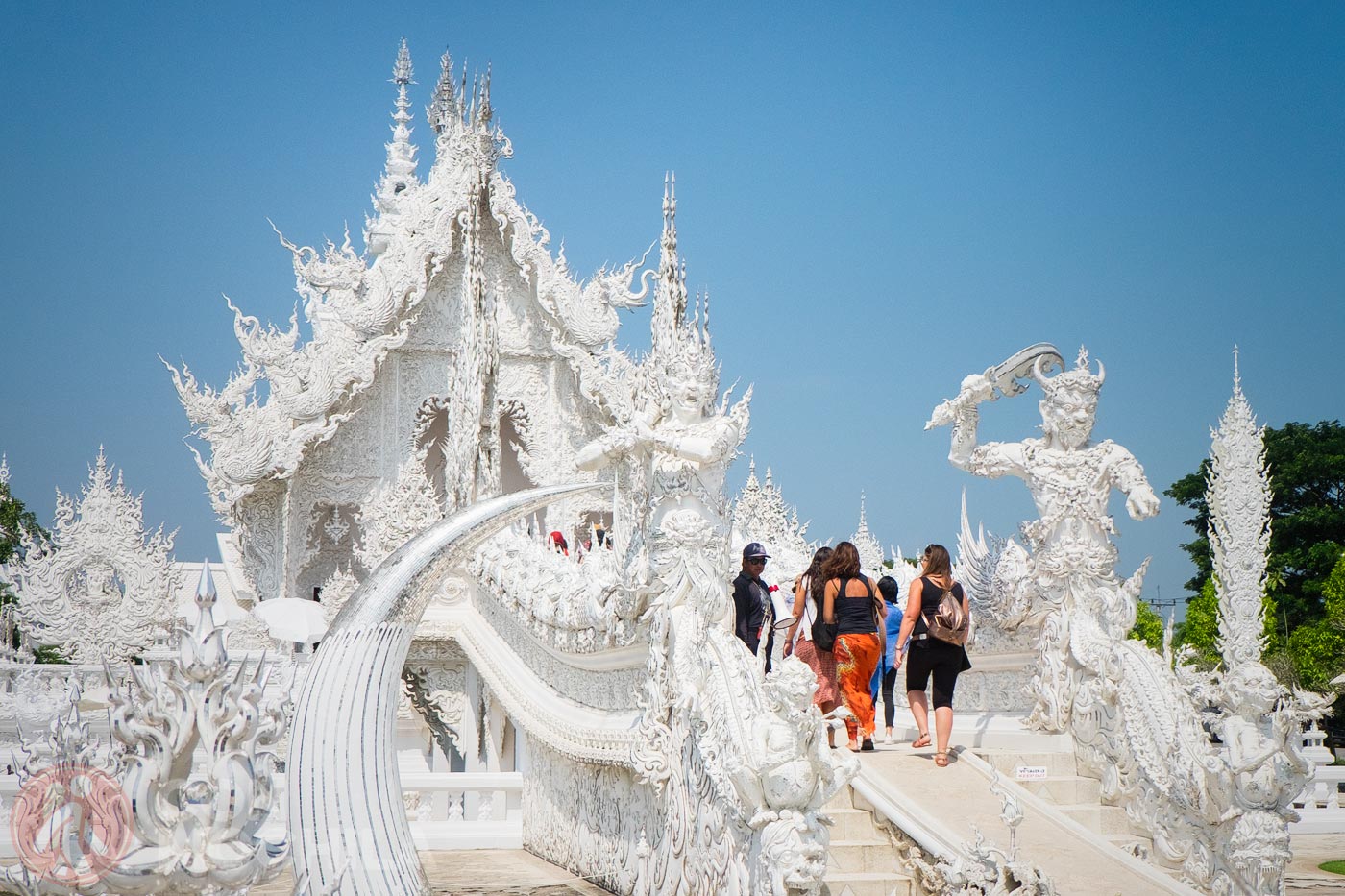
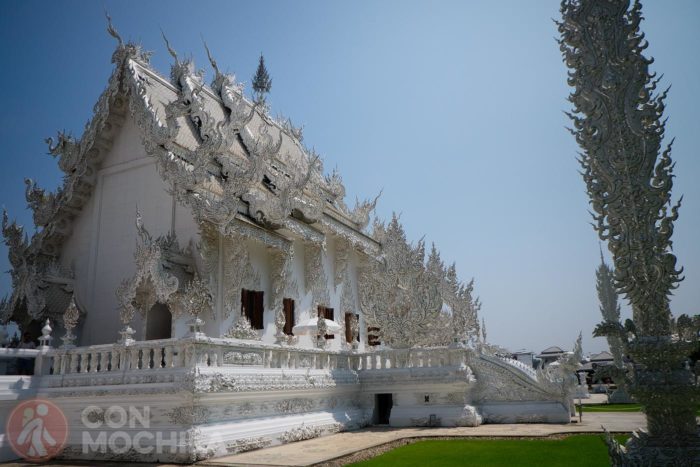
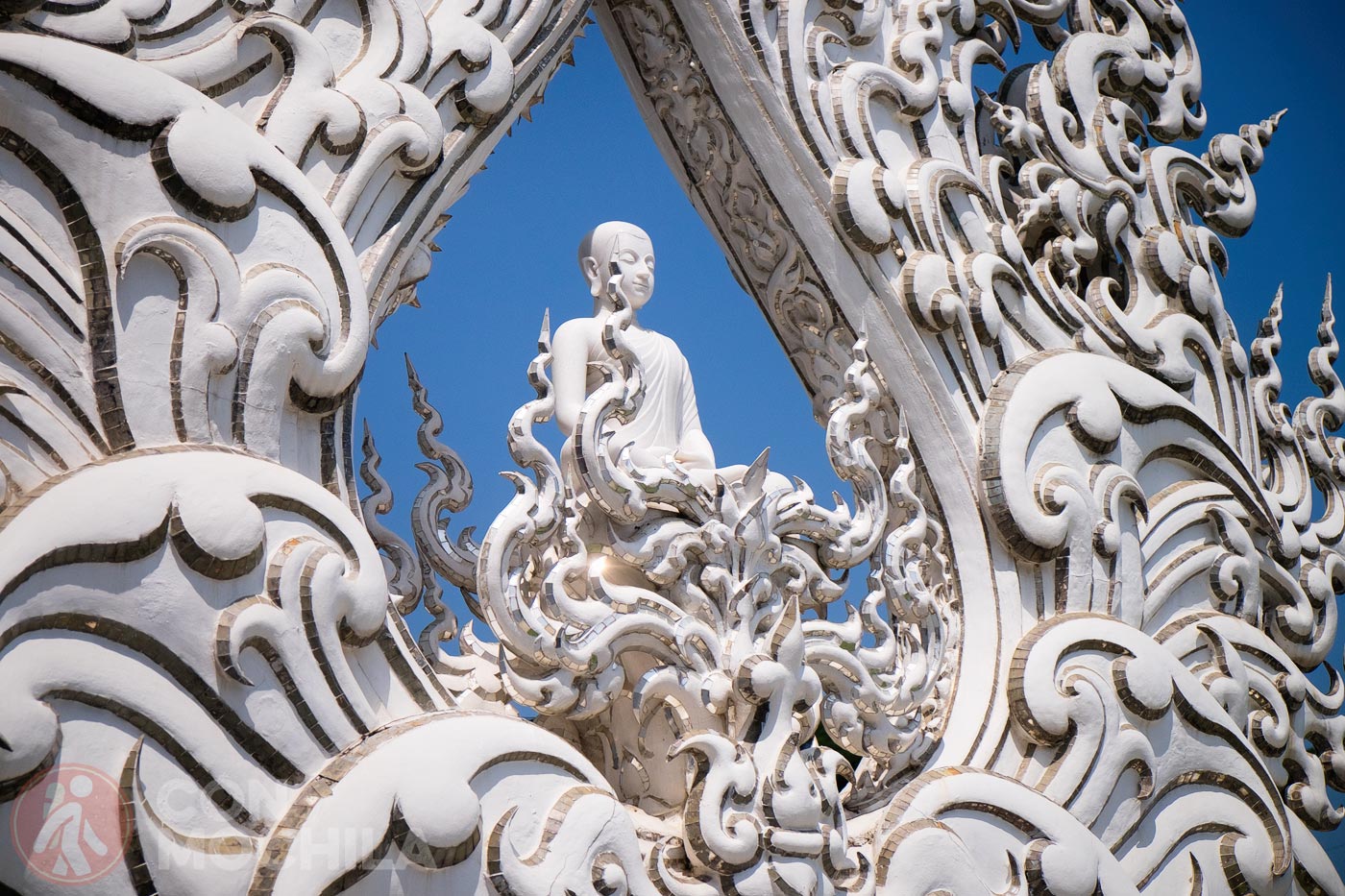

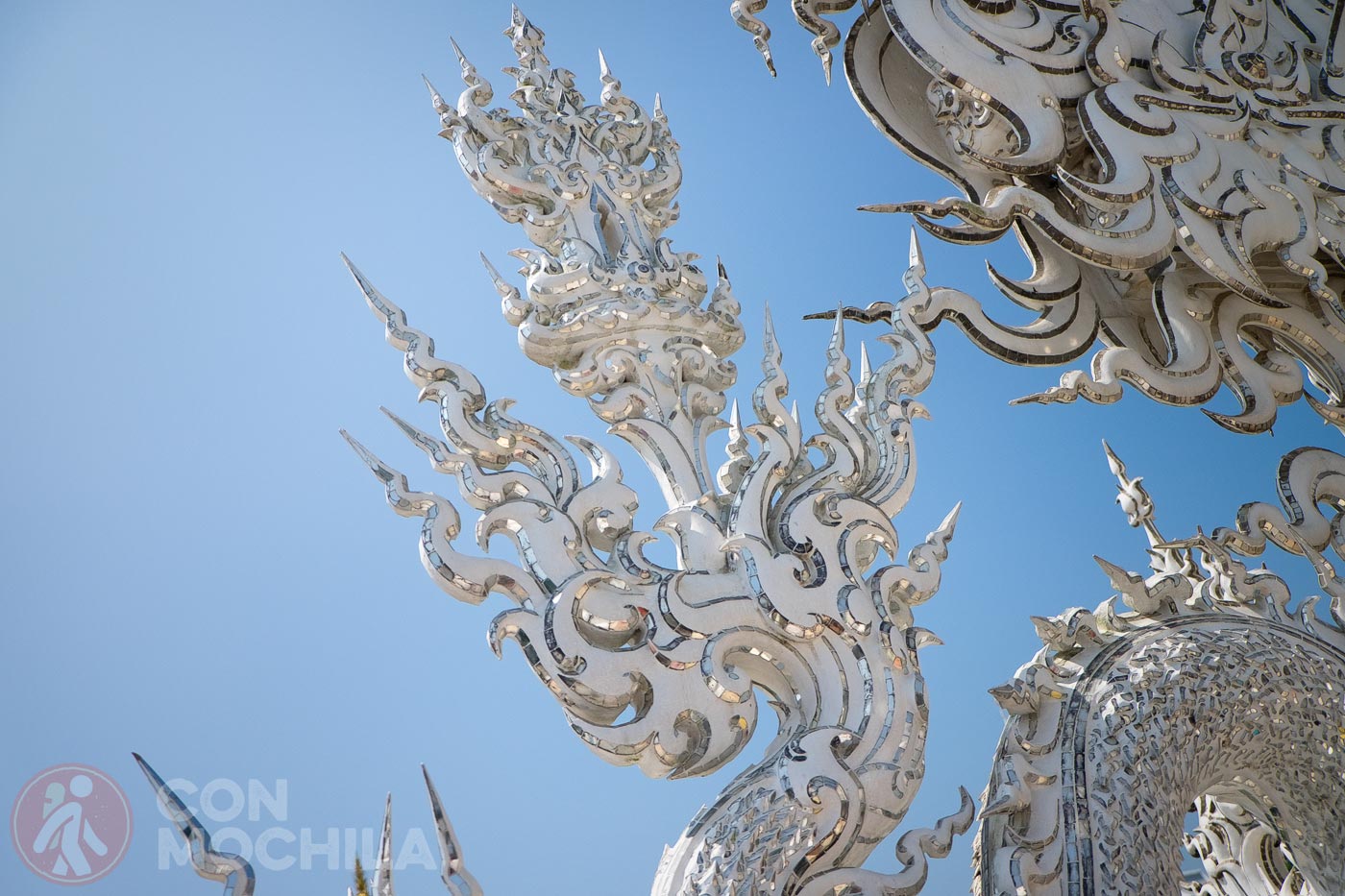
If you thought the exterior was striking, just wait until you step inside and witness the bold visual narrative of the struggle between Eastern and Western values.
This is when it becomes clear that the temple is modern. The mural inside includes everything from the Twin Towers under attack, demons, Converse sneakers, guns, Michael Jackson, George Bush, Angry Birds, and an embryo in an artificial womb. Oh—and plenty of superheroes.
Yes, it’s a vivid portrayal of violence and consumerism in Western culture. It makes a point.
Since photography is not allowed inside, I won’t spoil any more surprises. If you don’t go, you’ll miss out—so book a trip and experience this one-of-a-kind place with your own eyes.
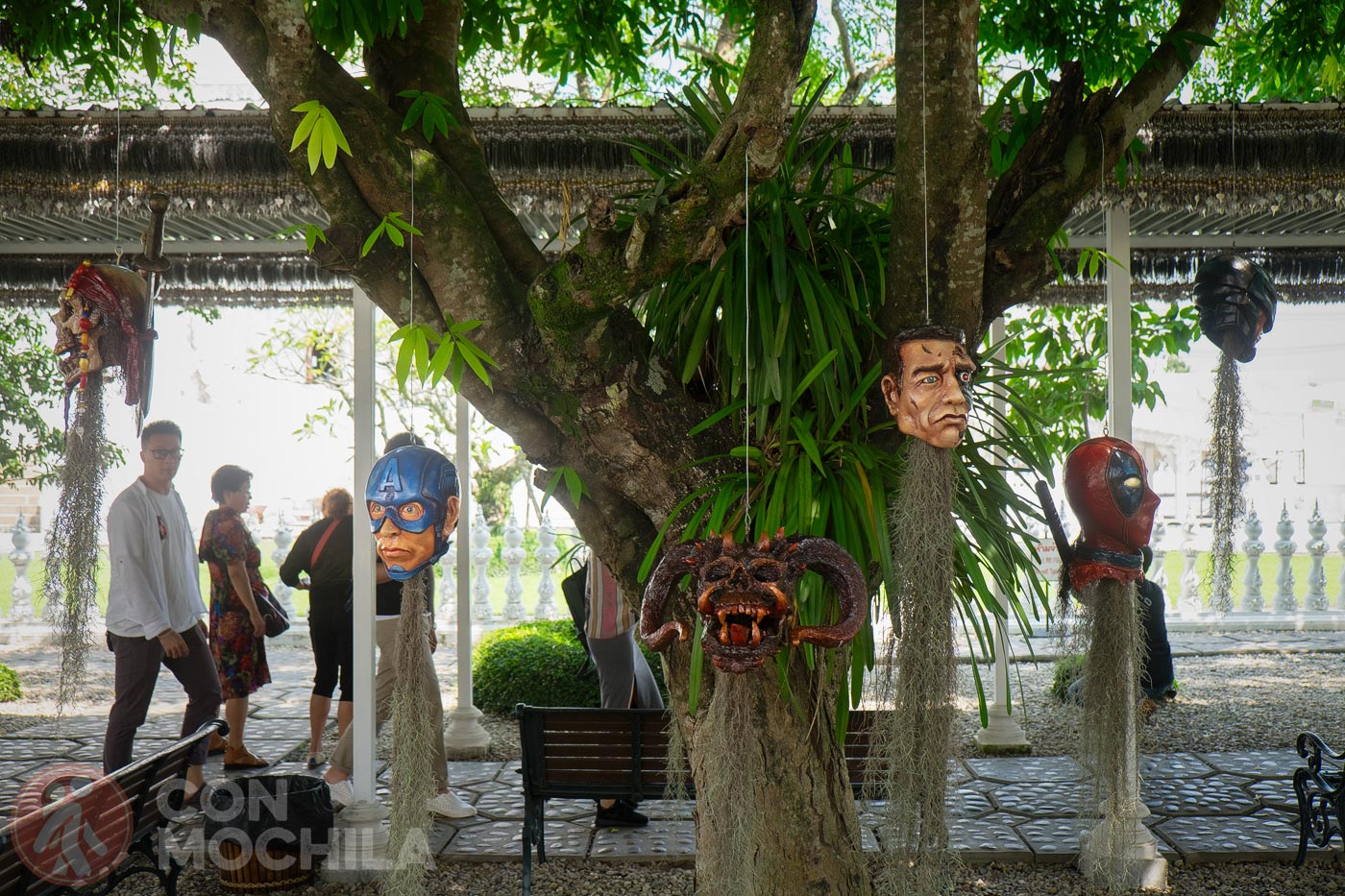
As you walk through the temple complex, you’ll discover several other buildings—including a wishing well where people toss in a few baht for luck, or simply as an offering. Who knows?
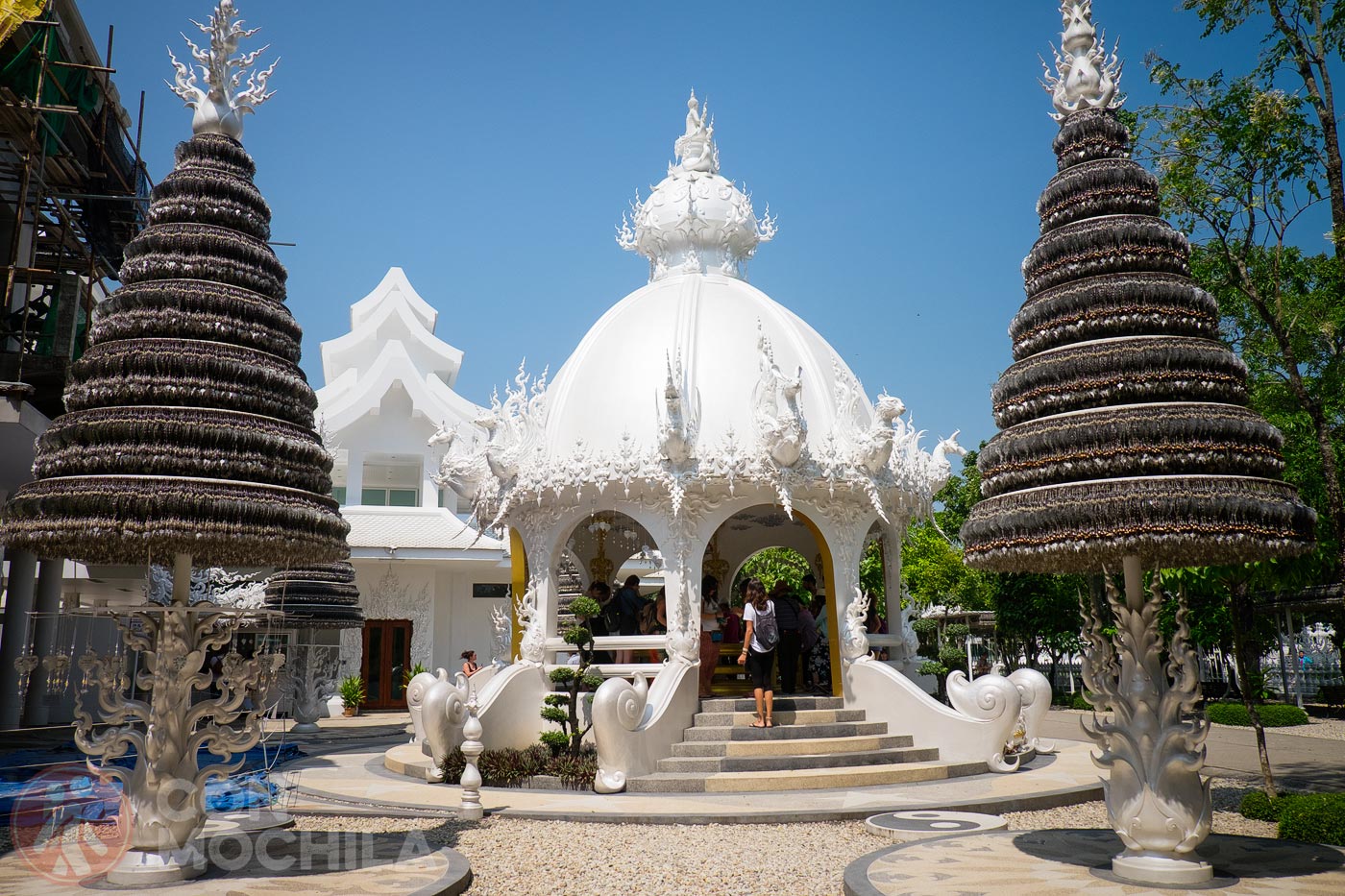


Take your time, wander around, and see what you uncover. If you arrive early, you’ll avoid the crowds that flood in daily and enjoy a much more peaceful experience.
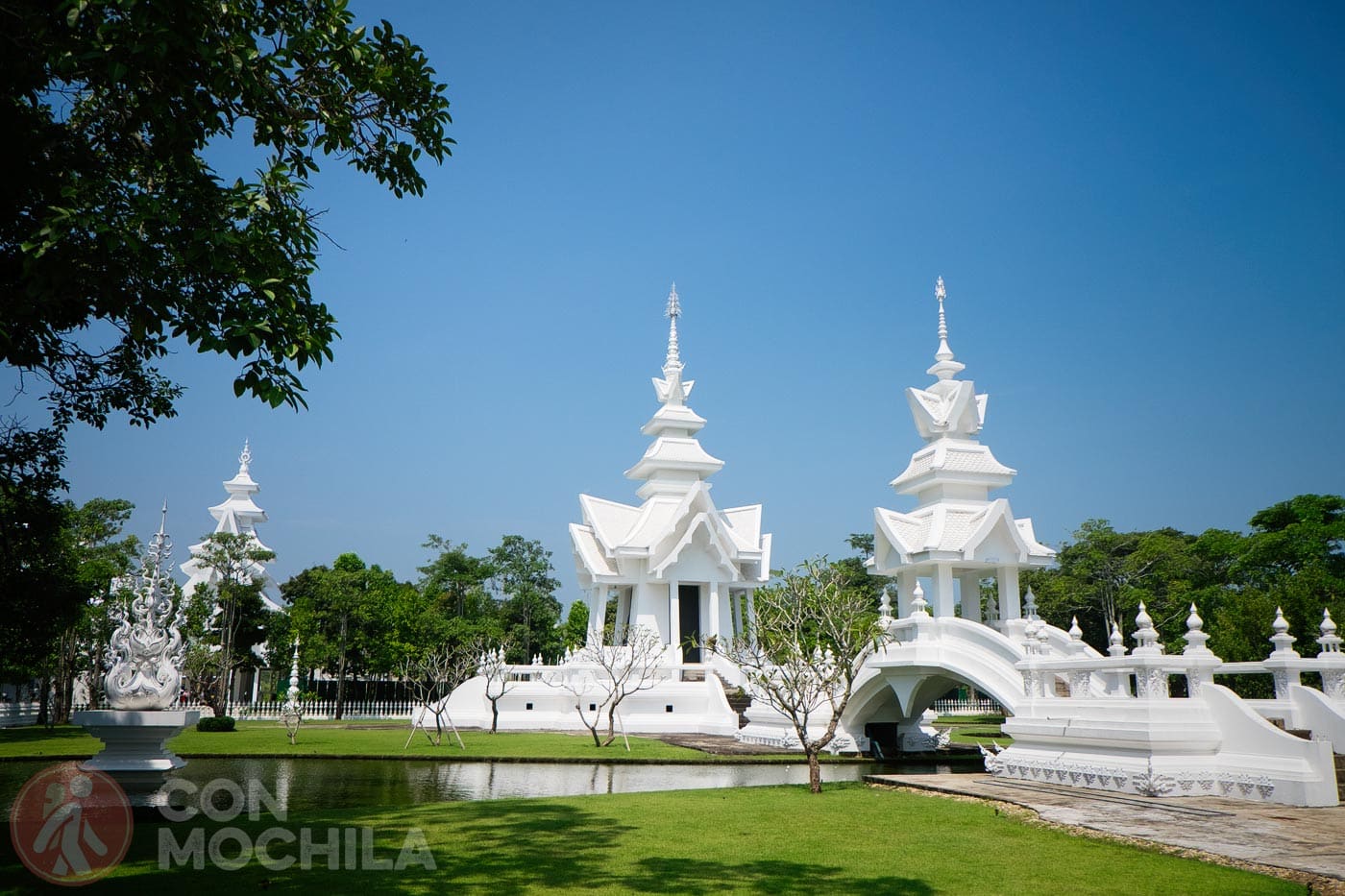
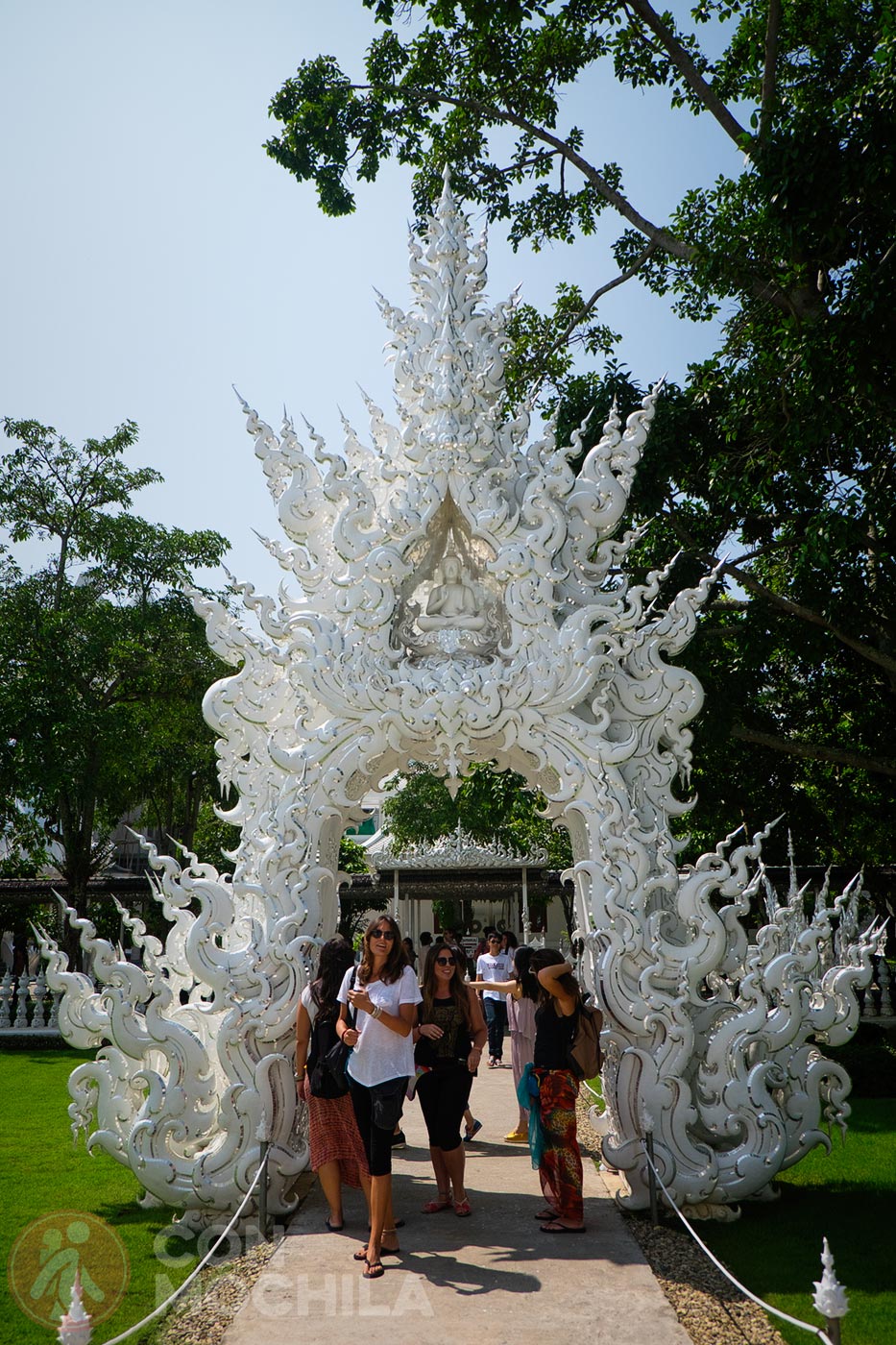
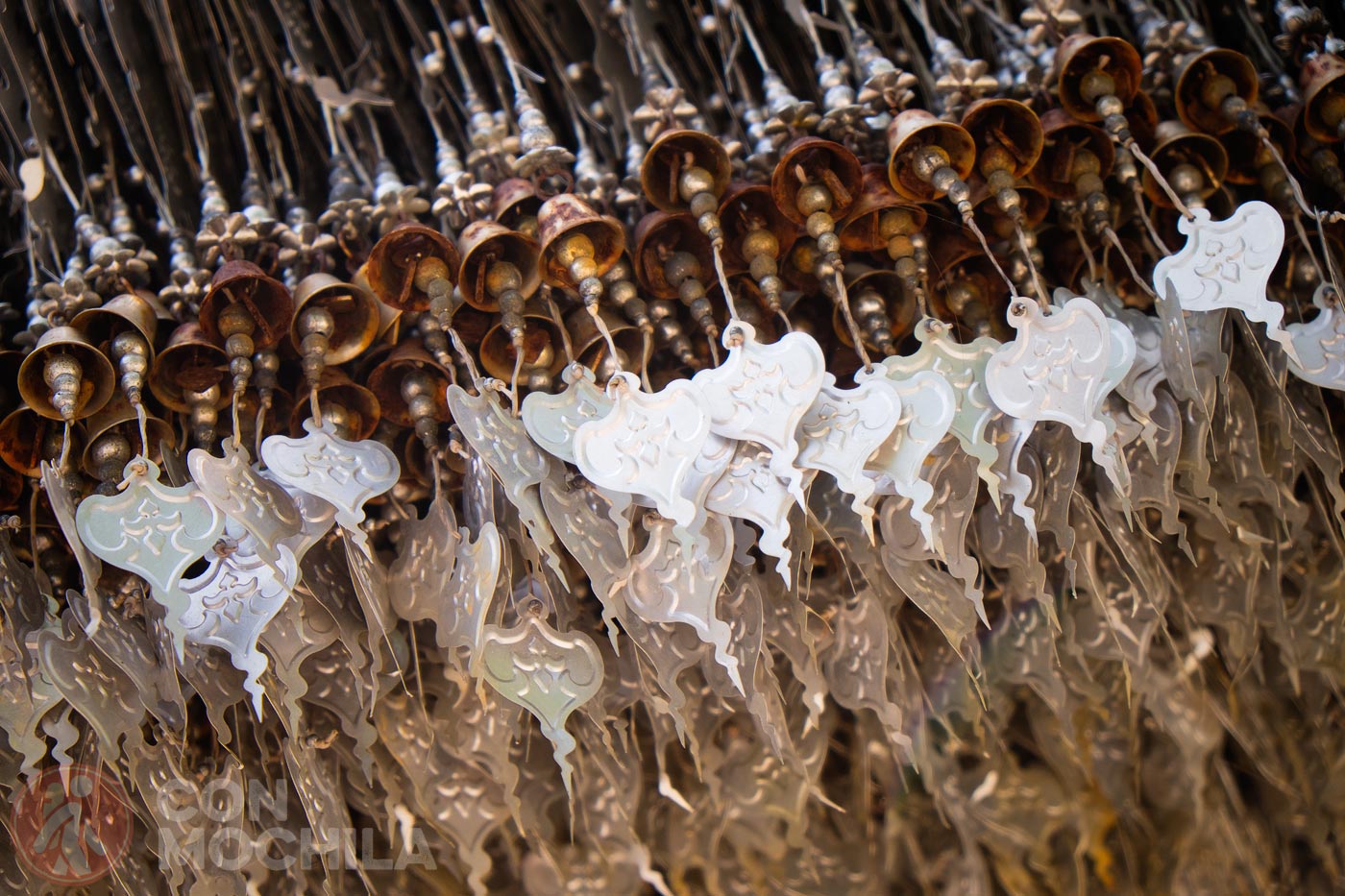
Since it’s so close to Chiang Rai, you can take advantage of the day to explore other nearby attractions, like the Baan Dam Museum (Black House)—just 30 minutes away and, as the name suggests, a perfect contrast after visiting the White Temple.
Once again, practice responsible tourism—and that means being respectful. You’re not in your own home, so follow the rules of your hosts: photography is not allowed inside.
As in all temples, there’s a basic dress code: no shorts or short skirts, shoulders should be covered, and shoes must be removed before entering. A sarong in your backpack, clean socks, and you’re good to go.
In short: follow the guidelines, be respectful, and when in doubt—ask. Otherwise, you might just end up as an example on the “bad Western behavior” poster…